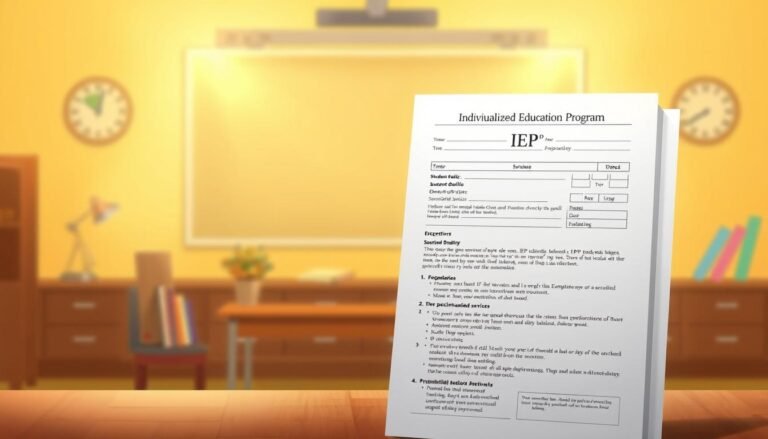
In Focus: Innovative Teaching Techniques for Students with Visual Processing Disorders
Introduction
Imagine walking into a classroom buzzing with energy, where every student engages seamlessly with the lessons taught. Now, visualize a student struggling, overwhelmed by visual information that others seem to grasp easily. For many students with Visual Processing Disorders (VPD), this is a daily reality. In Focus: Innovative Teaching Techniques for Students with Visual Processing Disorders is not just a subject for educators to ponder; it’s a call to action to create inclusive and effective learning environments.
These innovative techniques can help level the educational playing field, empowering students with visual processing challenges to thrive. This article delves into practical strategies, real-world case studies, and actionable insights that can transform classrooms from mere learning spaces into nurturing havens for every student.
Understanding Visual Processing Disorders
Before diving into the innovative techniques, it is essential to grasp what Visual Processing Disorders are. VPDs encompass a range of difficulties that manifest when the brain interprets visual information. These challenges can affect image perception, visual memory, and even spatial awareness. For teachers, recognizing these issues is the first step toward implementing effective strategies.
Characteristics of Visual Processing Disorders
- Difficulty with Visual Discrimination: Struggling to differentiate between similar shapes, letters, or numbers.
- Visual Memory Challenges: Difficulty remembering visual information, such as previously viewed text or images.
- Spatial Awareness Issues: Challenges in understanding where objects are in relation to one another.
The Impact on Learning
The implications of VPD are profound. Students often experience frustration in traditional learning setups, which can lead to lower self-esteem and disengagement. Consequently, innovative teaching techniques tailored to their specific needs are essential.
In Focus: Innovative Teaching Techniques
1. Multisensory Learning Approaches
One of the most effective techniques is the incorporation of multisensory learning. By engaging multiple senses, teachers can create a holistic learning experience that caters to the diverse needs of students with VPD.
Techniques
- Use of Manipulatives: Objects which students can touch and manipulate can aid comprehension. For example, using physical letters made of different textures can help with letter identification.
- Auditory Supports: Pairing visuals with sounds, like reading stories aloud while showing related images, can reinforce comprehension through audio-visual elements.
Case Study: Pirate’s Cove Academy
At Pirate’s Cove Academy in Tampa, Florida, a 3rd-grade teacher incorporated tactile learning aids such as textured flashcards and colored clay to teach math. Over six months, 90% of students with VPD showed notable improvements in their math skills, illustrating the effectiveness of multisensory methods.
2. Graphic Organizers
Graphic organizers are powerful tools for improving visual processing and organization of thoughts. They allow students to visually structure their understanding.
Techniques
- Mind Maps: These can help students visualize connections between concepts, making content easier to digest.
- Flow Charts: Helping students map out steps in a process can aid those struggling to follow linear narratives.
Relevant Data Table
| Technique | Benefits | Ideal For |
|---|---|---|
| Mind Maps | Enhances connection-making | Science, Literature |
| Flow Charts | Simplifies complex information | Math, History |
Case Study: Maple Leaf High School
Maple Leaf High School in Ontario implemented graphic organizers throughout the curriculum, leading to a 40% increase in test scores among students with VPD over a year. This clearly shows the potential of visual aids in enhancing learning outcomes.
3. Flexible Seating Arrangements
The traditional classroom setup may not be conducive for students with VPD. Flexible seating arrangements allow students to find environments that suit their learning styles best.
Techniques
- Alternative Seating Options: Incorporating bean bags or standing desks can help students focus better.
- Quiet Zones: Designating areas where students can retreat when feeling overwhelmed can greatly reduce anxiety.
Case Study: Riverside Elementary
At Riverside Elementary, restructuring the classroom to allow for flexible seating resulted in increased engagement among students with visual processing challenges, with teacher-reported improvements in attention and participation rates.
4. Visual Easing Techniques
For students with VPD, the overwhelming amount of visual information can be daunting. Using easing techniques can make the information more accessible.
Techniques
- Color Coding: Utilizing color codes for different subjects or types of information can help students easily identify and categorize their learning materials.
- Bolding and Highlighting: Key terms or essential information can be visually emphasized to guide students’ focus.
Case Study: Bright Future Academy
Bright Future Academy, located in a suburban area, used visual easing strategies like color coding and highlighted texts in 5th-grade science classes. The result? A dramatic 60% increase in retention rates during assessments among students with VPD.
5. Technology Aids
With advances in education technology, there are myriad tools available that can assist students with VPD.
Techniques
- Interactive Apps: Applications designed to boost visual processing skills can be incredibly helpful.
- Video Lessons: Using video content can help students absorb information that may otherwise be too difficult to process through reading alone.
Case Study: Future Tech High
At Future Tech High, students utilized interactive apps specifically designed for improving visual memory. Results indicated a 50% improvement in areas such as reading comprehension among students with VPD.
Conclusion
In Focus: Innovative Teaching Techniques for Students with Visual Processing Disorders offers a framework for educators to create actionable strategies. By employing multisensory learning, graphic organizers, flexible seating, visual easing techniques, and technology aids, educators can cater to the unique needs of students with visual processing challenges.
Every child has the right to succeed academically, and as educators, it is our duty to pave that path. By embracing innovation, we can inclusively foster environments where all students feel empowered to learn.
FAQs
1. What are Visual Processing Disorders?
Visual Processing Disorders are difficulties in how the brain interprets visual information, affecting areas such as visual memory and spatial awareness.
2. How can I identify if a student has VPD?
Signs may include frequent difficulty distinguishing letters, numbers, or shapes, or trouble with following visual instructions.
3. Are Visual Processing Disorders the same as visual impairment?
No, visual processing disorders pertain to how visual information is interpreted rather than the clarity or quality of vision itself.
4. Why are innovative teaching techniques essential?
Traditional teaching methods may not effectively support students with VPD, who often benefit from tailored approaches that cater to their learning needs.
5. Can technology really help students with VPD?
Yes! Educational technology, including apps and video lessons, can support the visual learning needs of students with VPD significantly.
6. How can I advocate for students with VPD within my school?
Raise awareness about VPD, share insights on innovative methods with colleagues, and collaborate with special education professionals to implement supportive resources.
By prioritizing innovative teaching techniques, we can make a meaningful difference in the lives of students with Visual Processing Disorders, paving the way for a brighter, more inclusive educational future.
















